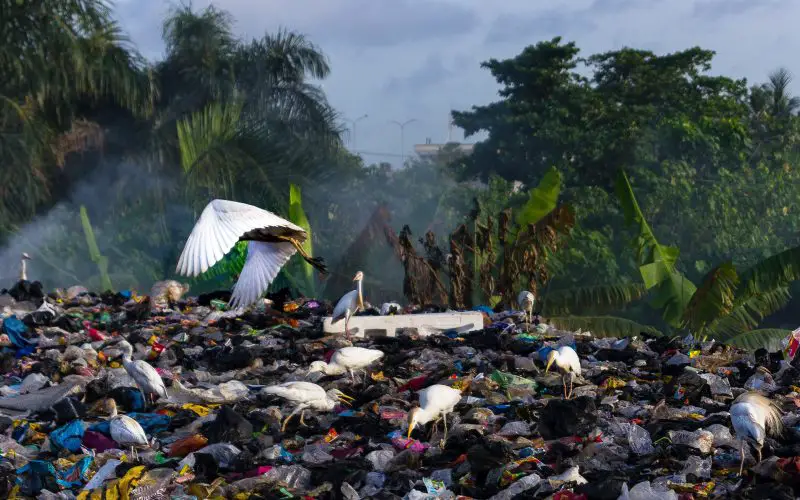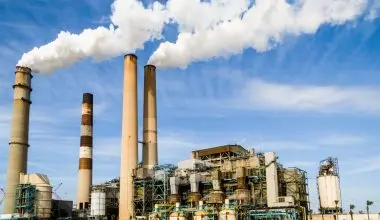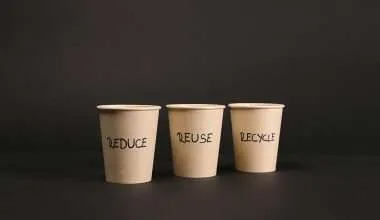Table of Contents Show
What is Solid Waste Management?
Solid waste management refers to the complete interaction of humans in disposal of waste materials. This includes it’s collection from households and trash cans to it’s treatment to reduce its weight as well as volume so it takes up less space when disposed at the final stage. Some amount of trash is recycled as well.
Overpopulated countries and high density residential areas have always had an issue with solid waste and solid waste management is all about finding ways to dispose off the solid waste in the most efficient manner. Solid waste management should be done at the level of each household and business.
Types and Sources of Solid Waste:
Millions of tons of solid waste coming from various residential, industrial and business sources is disposed off at all the nearby landfill sites. The waste is stored at landfill sites because they smell so bad and could influence the quality of life in the residential areas. Following are some of the sources of solid waste:
Residential:
Residential areas are designated specifically for people to live. These include houses and multi-story apartment buildings. These homes produce multiple kinds of solid waste or garbage such as plastics being the worst of them all as they don’t degrade, glass, paper products including cardboards, food materials, leather products like handbags, wood, metals, rubber, biological products, ash from the chimneys. Other than that there are special wastes which are products of everyday use such as electronics, tires, old mattresses, old toys and batteries.
This is why we are pushing for recyclable household products which can be reused and not go to waste and damage the environment.
Some countries such as the US have systems in place where these waste products are thrown into the bins and then these bins are collected by a waste collection company representative or individuals and transported for treatment.
Commercial:
Commercial buildings yet to be one of the major contributors to solid waste at this rate. Commercial places include bars, clubs, restaurants, hotels, offices, markets and stores and office buildings. The solid waste produced from here is of all kinds ranging from paper products, stationary, food by-products, metals, wood, glass, rubber, , cardboard and even hazardous products that can pose a serious health risk if not disposed properly.
Industrial:
Industries are at the top of the chain at producing solid wastes. These can be light or heavy manufacturing factories, construction sites, canning plants, timber factories, petroleum industry involving oil mining, chemical and power plants. Industries produce tonnes of specific kinds of waste according to which industry the factory/facility belongs to. Construction industry would mostly produce manufacturing waste, Food wastes, housekeeping and old or faulty machines are common in solid waste from industrial sources.
Institutions:
Institutions also produce a considerable amount of solid waste considering the amount of population involved. Institutions include schools, colleges, academies, prisons (large-scale and small-scale), military academies and other government associated Centers as well. The solid waste is composed of many materials such as paper, glass, wood, rubber, plastics, food wastes, quite a few electronics and hazardous materials as well.
Construction sites:
Construction and demolition also has a large amount of solid waste produced everyday. This is because construction and demolition has been occurring at an enormous rate nowadays. These constructions include new homes, buildings, roads. Not only new but renovations and road repairs also common. The waste from these areas is mostly related to the niche, like stones, dirt, concrete, steel, rubber and copper mainly wasted from the wires.
Agriculture:
Agriculture is said to be a ‘criminal’ when it comes to solid waste disposal due to the poor disposal techniques which lead to heavy metal fertilizers flowing into the river leading to extreme water pollution. Some examples of agricultural sources of solid waste include crop farms, vineyards, orchards and so on. These produce many forms of solid waste including food wastes (such as spoiled fruits and vegetables), machine parts and pesticide containers. In most cases solid waste disposal systems are not in place hence these solid wastes pile up or end in the rivers leading to water pollution.
Biomedical:
Although biomedical advancements have helped the human race flourish but at a steep cost to the solid waste disposal system and the environment.
Biomedical facilities include hospitals, clinics, laboratories, medical equipment manufacturers and pharmaceutical companies (chemical plants that test and manufacture drugs/medicines). These produce a multitude of solid waste due to the enormous demand of medical products. These solid wastes include syringes, bandages, used gloves, used medical equipment, drugs, plastics, paper related products and chemicals. The waste is also mainly due to the fact that most of the medical products such as syringes, bandages, medical equipment cannot be reused. All these products need to be disposed in such a way that they pose no harm to the environment. Most tertiary care hospitals have systems in place for the safe disposal of these high risk materials, some involving incinerators.
The reason is that this kind of waste is a bio-hazard if let out in the open, hence the precaution.
Effects of Poor Solid Waste Management
Because of the incompetency of the municipal services or private waste disposal companies, the solid waste piles up and could possibly become a problem. People clean their homes from the inside throwing trash outside, contaminating their community.
This way of ‘dumping’ trash out in the open causes an uncontrolled and very unhygienic form of decomposition. This form of open decomposition attracts all forms of insects and disease vectors and micro-organisms. This decomposition also produces a very foul smell around the area disturbing the beauty of the area.
Solid waste released from industries contain huge amount of toxic metals and hazardous chemicals that can cause all kinds of problems in the environment where it is dumped. It can even severely damage the soil of the land there.
These kinds of toxic and hazardous wastes seep into the soil and get into the ground water thereby causing water pollution. Even if rain occurs, the water above ground flows through this waste into the rivers which get polluted as well.
This hazardous waste can easily get mixed in with the normal trash and make the disposal of the materials quite harder, because the hazardous materials have to be separated. Hazardous waste disposal gets tedious and can be quite risky as well.
When this mixed up garbage that includes pesticides, fertilizers, batteries that might contain lead, mercury or zinc, cleaning products such as phenyl, radioactive materials, paper, plastics, wood, and rubber mixed with other trash. When this trash is burned, it produces all kinds of dioxides and toxic gasses that are deeply harmful to humans. These gasses cause air pollution and could even cause cancer if inhaled.
Methods of Solid Waste Management- Or Garbage Disposal!
Landfills
Sanitary landfills are the most commonly used method for garbage disposal today. The trash is separated into thin layers of garbage, compressed by a bulldozer, covered with soil or with plastic foam at times. Nowadays, modern landfills are made in such a way that there are many layers of thick non-porous layer of plastic and sand, which won’t let the water seep through. If the water was to seep through it would contaminate the ground water. When the landfill is filled, it is covered with all kinds of dirt, like soil, clay, sand, gravel and top soil to prevent the seepage of water.
Incineration
This method involves burning garbage at such high temperatures that it is turned into ashes. These incinerators are made in such a way that they do not produce very high amounts of heat energy when the solid waste is burned. This garbage disposal method is quite common and can be done by a person himself, an institution and administration of a town, city or a district. The good part is that incineration reduces the volume of solid waste by as much as 30 percent of the original volume.
Retake, Recycle and Reuse
Recycling or recovering from garbage means taking useful products that have been thrown out and reusing them. These products are usually cleaned, before being reused. This process helps in reducing energy loss, usage of new materials and also reducing landfills. There are also recycling centers in developed countries that take reusable items and process it for recycling. In the United States, you can usually find one near you. So the next time you think of throwing something away, it would be better to take it to the recycling center so it can be reused by someone else.
Composting
Composting is done because there is only limited space available for landfills. Composting is practiced only for biodegradable waste materials and these are allowed to decompose in an area designed for it. This area contains a medium best for decomposition. Environmental friendly manure is formed from decomposition of this biodegradable waste (compost) and can be used as an organic alternative to fertilizers in agriculture.
Pyrolysis
Pyrolysis is a method of Solid Waste Management where the solid waste is burned without oxygen. This way, the garbage is chemically decomposed by heat. The solid waste is turned mostly into gasses, liquids and some solids. The temperature during this process is around 500 degree Celsius with a pressure of about 2 MPa. However, the pressure can range from 0-5 MPa and some researchers suggest that higher pressures could reduce the heat requirement for Pyrolysis.
So, the moral of the story is that proper garbage disposal or Solid Waste Management system is an important process and is essential in environmental conservation. These kinds of processes should be adopted individually and by companies around the world to reduce the load of solid waste on the environment. This will also prevent the effects of poor Solid Waste Management as mentioned above along with improving health and settlement issues.





